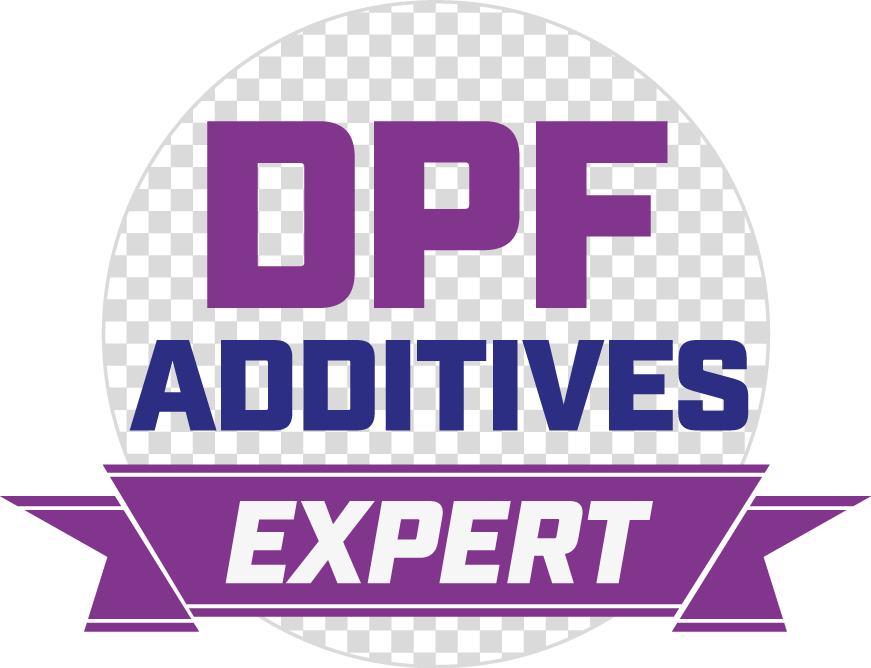Handbook Advice and Aftermarket Alternatives
Soot Blocking
As soot particles collect in the DPF, they should be regularly cleared out by burning away (a process known as Regeneration). Under ideal driving conditions, this will happen easily due to the high temperature in the exhaust. And vehicle manufacturers employ a number of strategies to keep regeneration happening under less favourable conditions (See ‘OEM Regeneration Strategies’). But sometimes these are not enough and soot builds up to the point where the vehicle detects it as a problem – resulting in the dreaded DPF warning light!
Handbook Advice
Once the vehicle’s on board computer (ECU) has flagged up the problem, and possibly put the car into reduced power ‘limp home’ mode, what can be done to remedy the situation? Advice from the vehicle’s handbook may include:
- Fast Drive. As a first response to the DPF warning light, the handbook suggests a fast drive (at least 40mph for 15min, engine speed over 2000rpm) to raise exhaust temperature to start soot burn-off. This is of course inconvenient for the driver, who has to take time out for an unnecessary journey, and wastes fuel. It may also not even be possible for drivers in very urban or rural areas to get to a suitable stretch of road, especially if problems are experienced frequently. The upside to this solution is that it is at least relatively cheap; only costing the price of the fuel wasted.
- Workshop Visit – Forced Regeneration. If the DPF blocks up further, it may go into ‘limp home’ mode necessitating a visit to the dealer or an independent garage. Here, the workshop may be able to carry out a ‘forced regeneration’ under controlled conditions, by accessing the vehicle’s ECU. Apart from taking the vehicle off the road and inconveniencing the driver, this course of action may cost several hundred pounds in garage bills.
- Workshop Visit – DPF Replacement. Ultimately, DPFs become damaged under the strain of constant soot loading, or through the impact of several forced regenerations. A new filter can cost £1,000 (or significantly more on larger vehicles).
Aftermarket Alternatives
There are a number of alternative solutions to DPF problems available in the vehicle aftermarket. Which one is most suitable may depend on factors like the severity of the issue, budget and whether the problem is recurring. Possible alternatives include:
- DPF Removal. Whilst it may seem tempting to simply get rid of the DPF entirely, this is not a good idea. In the UK, it would make the vehicle illegal to drive on public roads and cause it to fail an MOT. For more information see ‘Common Misconceptions – DPF Removal.’
- Off-vehicle cleaning. The DPF is removed and sent for away for cleaning. The specialist equipment used is quite expensive, so very few workshops have their own. Treatments may include chemical cleaning, compressed air blowing and oven baking. This option carries the disadvantage of fairly long vehicle downtime. However, it does result in a very thorough clean, and is about the only option to deal with ash build up (see below).
- Aerosol Spray. A garage-only treatment that involves inserting a nozzle through a sensor port upstream of the DPF in the exhaust. A liquid is then sprayed onto the surface of the DPF. This either contains a chemical to disperse the soot and make it easier to regenerate, or is flammable to enable rapid burn off once the exhaust gas is hot enough. The downside to these treatments is the possibility of causing hotspots or thermal shock to the filter. It is also fiddley, requiring partial disassembly of the exhaust system.
- Fuel Additive. Obviously, this is our Expert’s favourite option!
 In response to the DPF warning light, a reputable DPF Cleaner additive is poured into the fuel tank and topped up with fuel. During subsequent driving, catalyst particles pass through the engine and become embedded in the soot particles as they form. These pass into the exhaust stream and are trapped in the DPF. The catalyst lowers the temperature at which soot burns, allowing the DPF to start regenerating easily. Besides being a fraction of the cost of other treatments, additives are quick and easy to apply either in a garage, or by the driver themselves.
In response to the DPF warning light, a reputable DPF Cleaner additive is poured into the fuel tank and topped up with fuel. During subsequent driving, catalyst particles pass through the engine and become embedded in the soot particles as they form. These pass into the exhaust stream and are trapped in the DPF. The catalyst lowers the temperature at which soot burns, allowing the DPF to start regenerating easily. Besides being a fraction of the cost of other treatments, additives are quick and easy to apply either in a garage, or by the driver themselves.
Ash Build Up
If the reason for DPF blockage is the more long-term issue of ash build up, this cannot be solved by burning it away in situ. In this case, an off-vehicle clean or replacement would be required. Fortunately, the service life of a DPF for ash is in the region of 100,000+ miles. If ash build up occurs prematurely, or to maximise the DPF service life:
- Ensure that the oil system is functioning correctly. If the engine is burning a lot of oil, this will contribute a lot of incombustible material to the ash.
- Make sure the right oil is used. Vehicles fitted with DPFs require ‘low SAPS’ (Sulphated Ash, Phosphorous, Sulphur) oils, which produce the least possible amount of ash.
